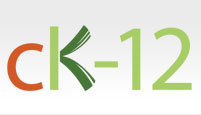An open source textbook is more than a book


I put the words "open source" in quotes because, while the work has a Creative Commons attribution license and was built using open source tools, its chapters are all bylined and it was done with strict peer review.
The technology platform comes from CK-12, Palo Alto, Calif., built using open source projects like Apache, Django, mySQL, PHP and Google Tools. Progress was tracked on a Wiki.
What may be most remarkable here is the timeframe.
Coordinator Jim Batterson announced the project in October, and his 13 authors had their work done by February 27. They included active researchers, high school teachers, and college professors, as well as some retirees.
Naturally, the new text is based on current technology. No talk of cathode ray tubes. And the resulting book can be updated, rewritten, on a regular schedule so it's new with each school year. The FlexBook can be viewed online with a CK-12 Flexbook reader or printed.
The contrast with current K-12 textbook acquisition methods is night-and-day. No multi-year lead times. No publisher control. And the approval process is also flexible.
CK-12 is a non-profit organization run by serial entrepreneur Murugan Pal and educator Neeru Khosla. The group has several dozen active authors, and a board of advisors heavy on the Sun exes.
Think about how texts are developed now, think of how much faster this process is, consider the costs of each, and I think you'll admit that what we have coming is a revolution. The fact CK-12 is far from alone here may be the best news of all.